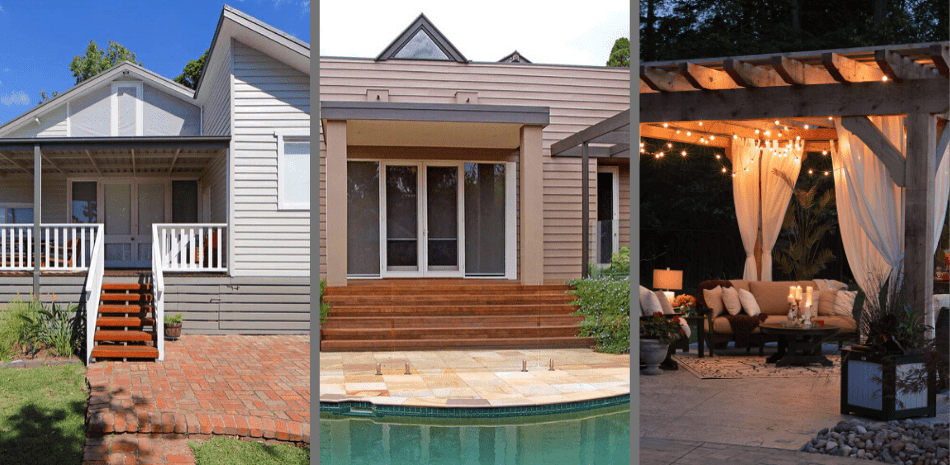What is a Pergola?
A pergola is a freestanding or attached outdoor structure that is designed to provide shade and support climbing plants such as vines or flowers. It typically consists of vertical posts or pillars that support a roof of open crossbeams or a lattice. The roof of a pergola can be open or closed, depending on the desired amount of shade and protection from the elements.
Pergolas have been a popular outdoor structure for centuries and come in a wide variety of styles and materials. Wooden pergolas are a classic choice and can be made from a variety of species such as cedar, redwood, and treated lumber. Metal pergolas made of steel or aluminum are a modern and durable option that can withstand harsh weather conditions.
One of the main benefits of a pergola is that it creates an additional outdoor living space that can be used for dining, entertaining or relaxing. Adding a pergola to your backyard can also increase the value of your home and enhance its curb appeal.
Pergolas can be customized to fit your individual needs and style preferences. They can be designed to complement the exterior of your home, or to stand out as a unique focal point in your backyard. You can also add elements such as outdoor lighting, curtains, and even outdoor heaters to make your pergola a comfortable and functional living space even in cooler weather.
Whether you prefer a traditional wooden pergola or a modern metal design, a pergola is a versatile and stylish addition to any outdoor space. It provides shade, a place to relax and gather, and adds value to your home. Consider adding a pergola to your backyard to enhance both its functionality and beauty.
What is a Patio Cover?
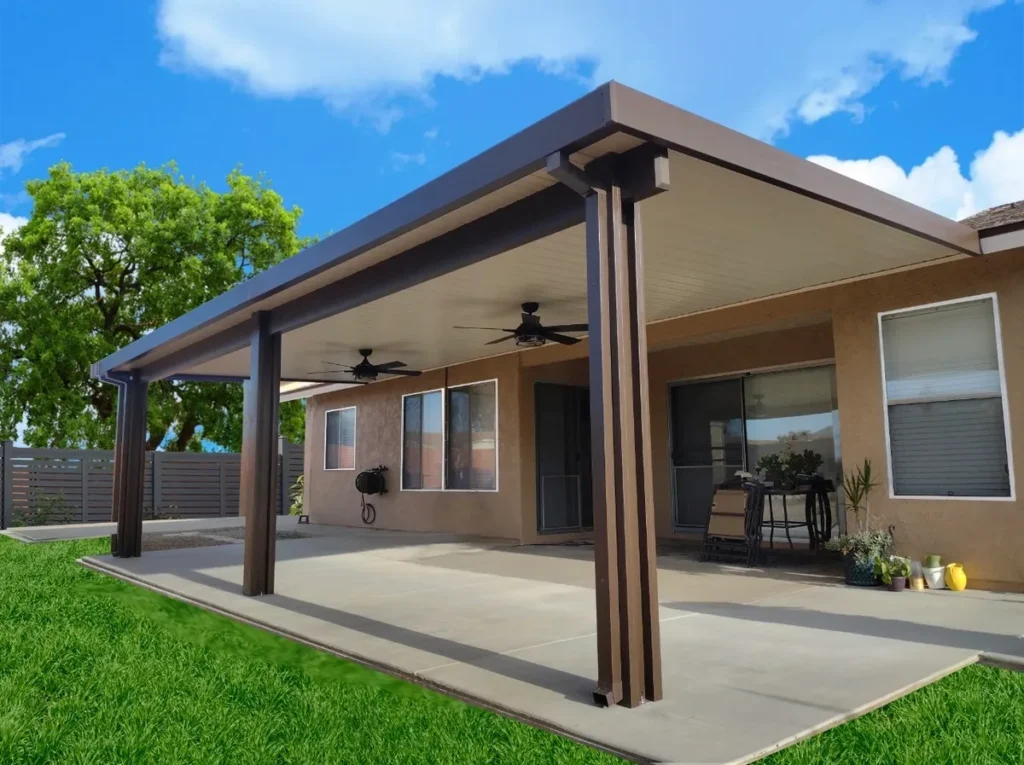
A patio cover is a type of outdoor structure that provides shade and protection to an outdoor living space. It is typically attached to the exterior of a home or building and can come in a variety of styles and materials. A patio cover is also commonly referred to as a covered patio or a patio roof.
The primary purpose of a patio cover is to create a sheltered space outside that can be used for a variety of purposes. Whether you want to relax in the shade, entertain guests, or dine al fresco, a patio cover can provide a comfortable and functional outdoor living area that can be used throughout the year.
Patio covers come in a wide range of designs to suit different needs and preferences. Some are freestanding structures that can be placed anywhere in your backyard, while others are attached to the exterior of your home. You can also choose from different materials such as wood, aluminum, or vinyl, each with its own advantages and disadvantages.
One of the main benefits of a patio cover is that it provides shelter from the elements. This means that you can enjoy your outdoor space even in rainy or hot weather conditions. Patio covers can also help to reduce energy costs by providing shade to your home, reducing the amount of heat that enters your home during the summer months.
Maintenance of a patio cover is generally minimal, with occasional cleaning and maintenance required to keep it looking its best. Regular maintenance can help to extend the lifespan of your patio cover and ensure that it provides the protection and shade that you need for years to come.
In conclusion, a patio cover is an excellent addition to any outdoor living space. It provides protection from the elements, increases usable space in your backyard, and can even help to reduce energy costs. With so many different styles and materials to choose from, finding the right patio cover for your home and needs is easy.
Difference in Purpose
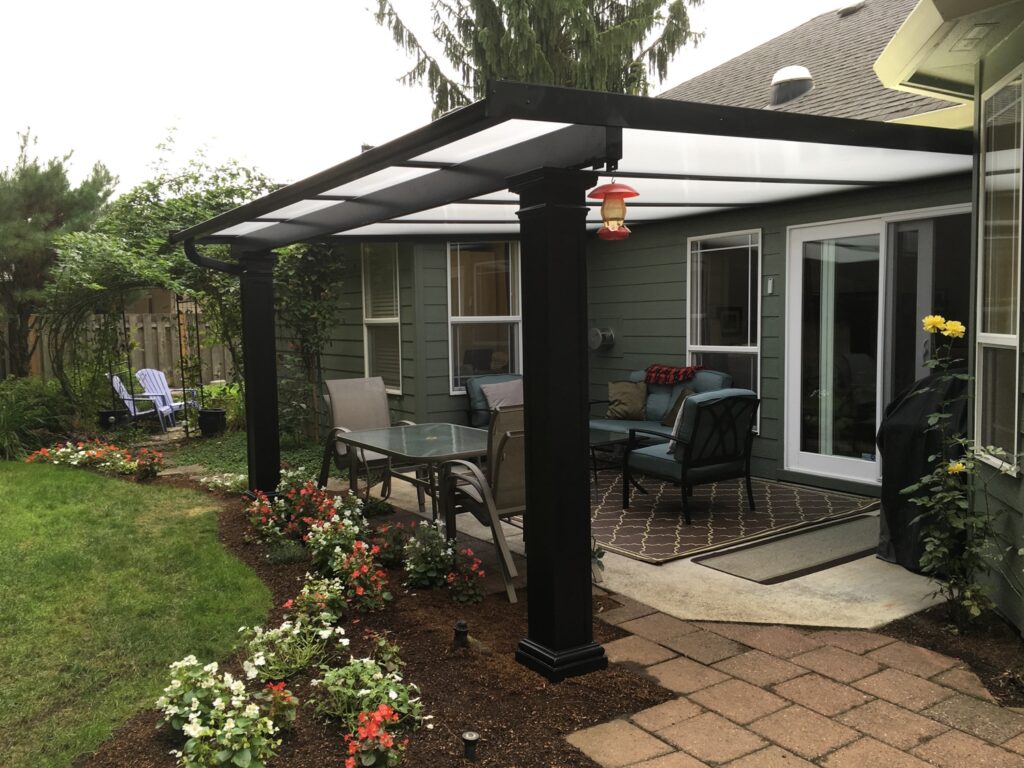
When it comes to outdoor living spaces, there are many options available to homeowners, including patios and pergolas. While they may look similar at first glance, there are key differences in their purpose that set them apart.
A patio is typically a solid platform made of concrete, brick, or stone that is directly attached to the ground. Its primary purpose is to provide a stable and functional outdoor space for entertaining, dining, or relaxation. A patio can be customized to suit a wide range of styles and needs, from a small seating area to a large outdoor kitchen or dining space.
On the other hand, a pergola is a freestanding structure made of vertical pillars or posts that support a horizontal roof. Its main purpose is to add shade and visual interest to an outdoor space. It can be used as a standalone feature or incorporated into a larger outdoor living area, such as a patio or deck.
The key difference in purpose between patios and pergolas is that patios offer a solid, stable foundation for outdoor activities, while pergolas are primarily designed to provide shade and unique design elements. That being said, a pergola can still offer some protection from the elements, depending on the design, such as adding a fabric or louvered roof.
So, when deciding between a patio and a pergola, it is important to consider their primary purposes and how they fit into your overall outdoor living plan. If you are looking for a stable and functional space for activities, then a patio may be the best option. However, if you are looking for an eye-catching element that provides shade and visual interest, a pergola may be the right choice for you.
Adding Aesthetic Value
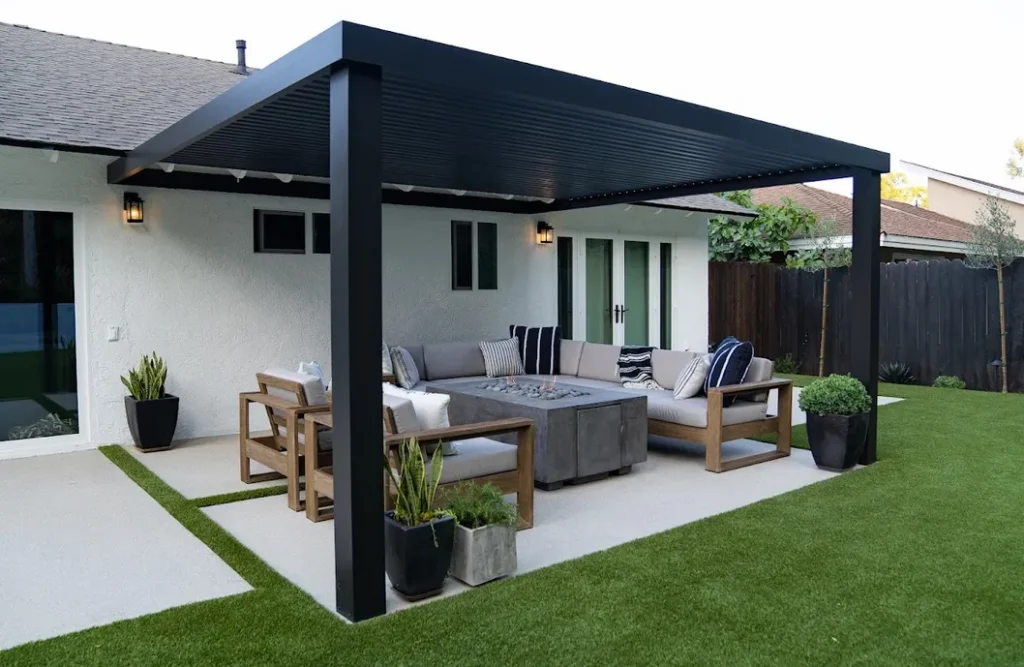
When it comes to home design and improvement, the focus is often on practicality and functionality. However, adding aesthetic value to your home can have a significant impact on its overall appeal and even its resale value. Here are some tips to help you add aesthetic value to your home.
One effective way to add aesthetic value to your home is through the use of color. This can be achieved by painting the walls, adding colorful accents such as throw pillows or artwork, or by incorporating colorful plants in your landscaping. Choose colors that complement each other and reflect your personal style and taste.
Another way to enhance the aesthetic appeal of your home is by incorporating textures. This can be achieved by adding textured wallpaper, using different types of flooring, or by incorporating natural elements such as stone or wood. Textures add depth and interest to a space, making it feel more inviting and dynamic.
Lighting also plays a crucial role in enhancing the aesthetic value of a home. Use a combination of natural and artificial lighting to create a warm and inviting atmosphere. Incorporate strategic lighting fixtures such as chandeliers or pendant lights, and use accent lighting to highlight artwork or architectural features.
Furniture and accessories are also important elements in adding aesthetic value to a home. Choose pieces that complement the overall style of your home and reflect your personal taste. Don’t be afraid to mix and match different styles and textures to create a unique and eclectic look.
Finally, landscaping is an often overlooked but crucial element in enhancing the aesthetic value of a home. Well-manicured lawns, beautiful gardens, and the strategic placement of trees and shrubs can all add value and curb appeal to your home.
In summary, adding aesthetic value to your home is a worthwhile investment that can have a significant impact on its overall appeal and value. Use color, texture, lighting, furniture, accessories, and landscaping to create a space that reflects your personal style and enhances the beauty of your home.
Creating Shade Solutions
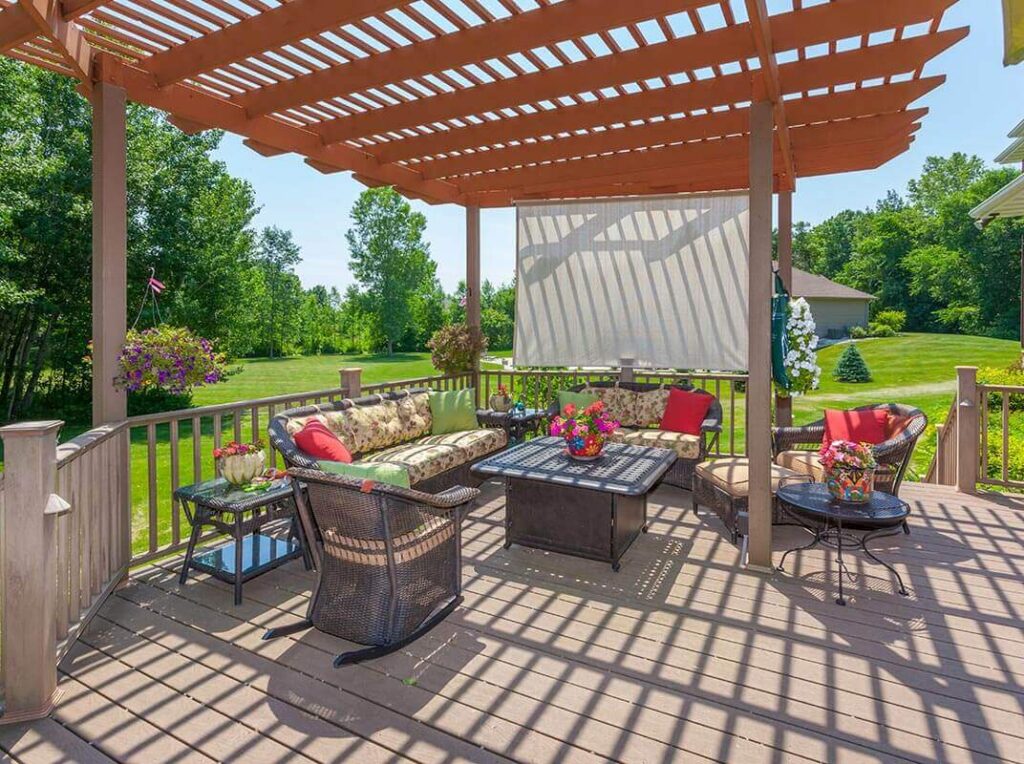
As the weather warms up and the sun starts to shine, spending time outdoors becomes more desirable. However, too much sun can quickly become uncomfortable, and even dangerous. This is where shade solutions come in. Creating shaded areas in your outdoor space allows you to enjoy the fresh air without the risk of sunburn or heat stroke. Here are some tips for creating shade in your outdoor space.
One common option for providing shade is a patio cover. Patio covers can be freestanding structures or attached to the house. They typically have a solid roof that provides complete protection from the sun and other harsh weather conditions. Additionally, a patio cover can also be a great way to extend your outdoor living space, providing shelter for outdoor kitchens, dining areas, and more.
Another option is a pergola, which is an outdoor structure with a roof made of slats that allow for partial shade and plenty of natural light. Pergolas can be made of wood or steel, and often provide a more modern, open-air look to your outdoor space. Pergolas also offer the ability to create a cozy, outdoor room with structure walls, allowing it to become an extension of your home.
If you want additional shade for your patio cover or pergola, adding shade structures such as screens, curtains, or blinds can be a great way to control the amount of light filtering through. Additionally, incorporating natural shade elements such as trees and tall shrubs can provide a beautiful aesthetic and environmental solution to shade.
When choosing a type of cover for your outdoor space, consider the type of weather in your area and the amount of regular maintenance that may be required. A solid roof may provide complete protection from the elements, but it may also trap heat and require more energy to cool the space underneath. On the other hand, a pergola can provide a comfortable, open-air living space, but may require more regular maintenance due to exposure to the elements.
Creating shade solutions for your outdoor space can not only enhance the aesthetic appeal of your home but also provide a more comfortable and safe environment for outdoor living. By considering the different types of covers and shade structures available, you can find a solution that fits your needs, style, and budget.
Providing Protection from the Elements
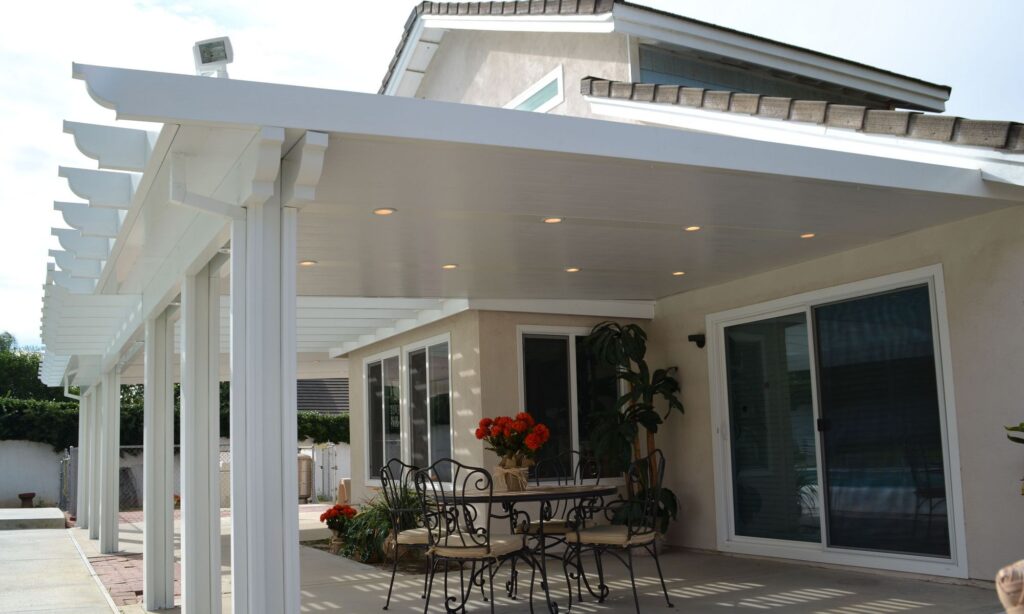
Whether you’re looking to create a cozy outdoor sanctuary or protect your outdoor furniture, providing protection from the elements is an important consideration when designing your outdoor space. There are several options available for shielding your outdoor space from the sun, wind, and rain, including patio covers, pergolas, and shade structures.
A patio cover is a solid roof option that provides complete protection from the sun and other harsh weather conditions. It can be attached to your home or be freestanding, and can be made of a variety of materials, including wood, aluminum, or vinyl. Patio covers are a great way to extend your outdoor living space and can provide shelter for outdoor kitchens, dining areas, and more. You can also consider a good quality of patio umbrella for shelter.
Another popular option is a pergola, which is an outdoor structure with a roof made of slats that allow for partial shade and plenty of natural light. Pergolas can be made of wood or steel, and often provide a more modern, open-air look to your outdoor space. They also offer the ability to create a cozy outdoor room with structured walls, making it an extension of your home.
In addition to these more permanent options, shade structures such as screens, curtains, or blinds can be a great way to control the amount of light filtering through and to protect your outdoor space from the elements. Incorporating natural shade elements such as trees and tall shrubs can also provide a beautiful aesthetic and environmental solution to shade.
When choosing a type of cover for your outdoor space, consider the type of weather in your area and the amount of regular maintenance that may be required. A solid roof may be the best option for areas with harsh weather conditions, but it may also trap heat and require more energy to cool the space underneath. On the other hand, a pergola can provide a comfortable, open-air living space, but may require more regular maintenance due to exposure to the elements.
Whether you opt for a patio cover, pergola, or shade structure, providing protection from the elements can help you create an outdoor space that is comfortable, functional, and beautiful. It’s important to consider your specific needs and the climate in your area when choosing the best option for your outdoor space.
Creating Outdoor Living Spaces
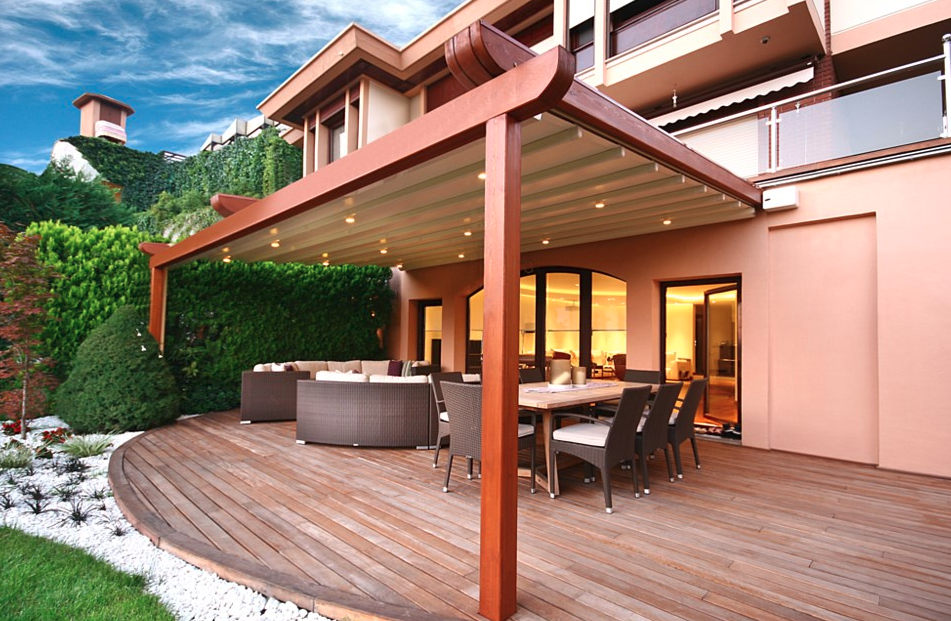
Creating outdoor living spaces has become increasingly popular over the last few years, and for good reason. Not only do they add value to your home, but they also provide a cozy, comfortable area where you can relax and entertain guests. Whether you have a large backyard or just a small patio, there are endless possibilities for creating an outdoor living space that works for you.
The first step in creating an outdoor living space is to determine your needs and style. Do you want a space for entertaining guests, a private oasis for relaxation, or a combination of both? What colors and materials do you prefer? Once you have a clear idea of what you want, it’s time to start planning.
One of the most important elements of an outdoor living space is seating. Consider the size of your area and choose furniture that fits comfortably while still allowing room to move around. Outdoor sofas and chairs can be made from a variety of materials, including wicker, metal, and wood. Don’t forget to add comfortable cushions and pillows for a cozy touch.
Another important aspect of an outdoor space is lighting. String lights, lanterns, and even candles can provide a warm and inviting ambiance. For a more permanent solution, consider installing outdoor lighting fixtures such as spotlights or pendant lights.
Creating a focal point in your outdoor space can also add interest. A fire pit or outdoor fireplace is a popular choice and can be used for both warmth and ambiance. Water features such as fountains or ponds can also be a beautiful addition.
Finally, don’t forget the plants and landscaping. Adding greenery and flowers can enhance the overall look and feel of your outdoor living space. Consider using potted plants or creating a garden bed for a colorful pop.
Creating an outdoor living space can seem daunting, but with some planning and creativity, it can become a favorite spot in your home. Whether it’s a relaxing oasis or a lively entertainment area, the possibilities are endless.
Differences in Design and Structure
When it comes to creating an outdoor living space, two popular options are pergolas and patio covers. While both provide shade and protection from the elements, there are some key differences in their design and structure.
A pergola is a freestanding structure made up of vertical posts and crossbeams that create an open-roofed framework. Typically, a pergola does not have a solid roof, and instead offers partial shade or filtering of natural light. While pergolas can be made from a variety of materials, including wood, metal, or vinyl, they all share an open and airy design that is ideal for creating an outdoor entertainment area or providing a visually appealing structure to your yard.
On the other hand, a patio cover is a more solid structure typically attached to the exterior of a building or home. Patio covers can be made from a range of materials, including wood, aluminum, or vinyl, and feature a solid roof designed to provide complete shade and protection from harsh weather conditions. The solid roof structure of a patio cover makes it ideal for outdoor kitchens or dining areas, as it provides complete protection from the elements throughout the year.
While both pergolas and patio covers offer shade and protection from the elements, they have different advantages depending on your needs. For those looking for a visually appealing structure in their yard to add character and dimension, a pergola is an excellent option. However, for those seeking complete shade and protection from inclement weather, a patio cover may be more appropriate.
When it comes to designing your outdoor living space, the type of cover or structure you choose is important. Pergolas and patio covers both offer usable space and the ability to create an outdoor oasis, but have different strengths when it comes to the type of cover or the primary difference in the design and structure. Whether you want complete shade, plenty of natural light, or something in between, it’s important to consider the specific needs of your space and choose the right cover or structure that meets your individual needs.
The Roof Structure of a Pergola vs. a Patio Cover
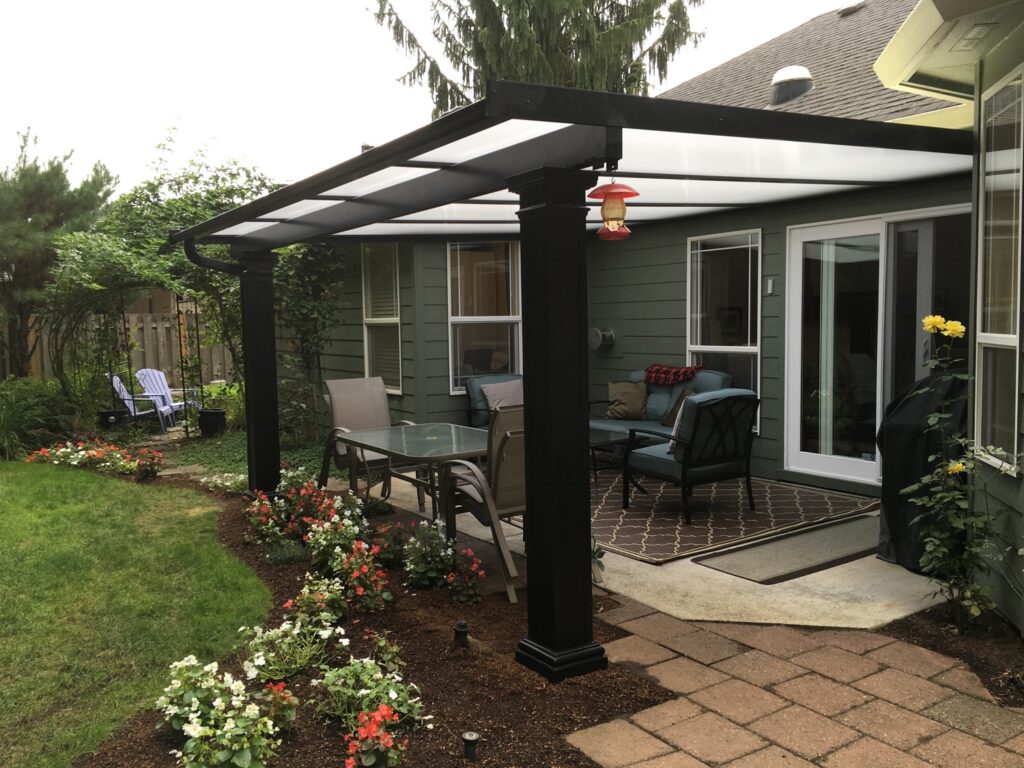
When it comes to creating an outdoor living space, both pergolas and patio covers can offer a beautiful and functional addition to your backyard. However, one of the key differences between these two structures is the type of roof they feature.
A pergola typically features an open-roofed framework made up of vertical posts and crossbeams. This means that the roof structure of a pergola is not solid, and instead provides partial shade or filtering of natural light. While this design may not provide complete protection from the elements, it can create a beautiful and airy space that is perfect for relaxing or entertaining.
On the other hand, a patio cover features a solid roof structure designed to provide complete protection from harsh weather conditions such as rain or strong sun. The solid roof of a patio cover makes it an ideal option for those looking to create an outdoor kitchen or dining area that can be comfortably used throughout the year. Along with this, different types of all-weather patio furniture are available in the market
When it comes to roofing material, both pergolas and patio covers can be made from a variety of materials including wood, metal, or vinyl. However, it is important to note that the type of roofing material used can have an impact on both the appearance and functionality of the structure.
For those looking for a modern or industrial look, a steel pergola may be an appealing option. Wooden pergolas, on the other hand, can create a warm and inviting space that blends seamlessly with the natural surroundings of your yard.
In terms of energy costs, the type of roof structure can also play a role. The open-roofed design of a pergola means that it allows for plenty of natural light to filter through, potentially reducing the need for additional outdoor lighting. However, a patio cover’s solid roof structure can offer more complete shade, potentially reducing the need for air conditioning or keeping the indoor space cooler.
In summary, the type of roof structure on a pergola or patio cover can have an impact on both the appearance and functionality of the structure. While a pergola can create a beautiful and open space, a patio cover can offer complete protection from the elements, making it a more functional option for outdoor living and dining areas. So, it is up to the individual to determine their priorities and choose the appropriate structure for their unique needs.

